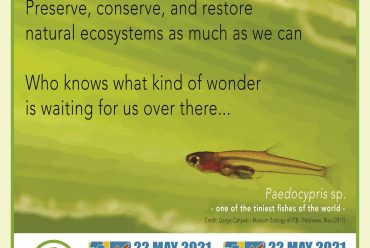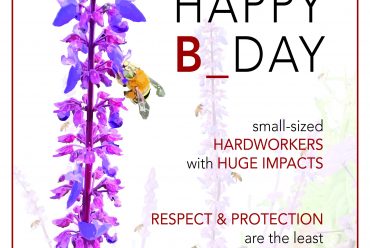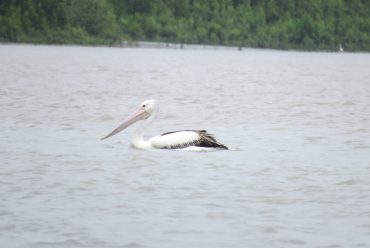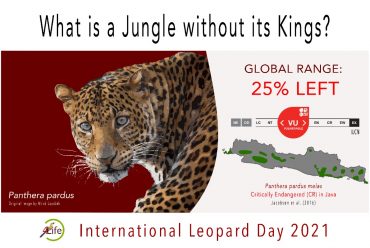World Turtle Day & Sea-Turtle Day 2021
ID
Penyu sisik (Eretmochelys imbricata), diketahui memiliki sebaran yang luas hampir di seluruh dunia, tepatnya di laut tropis dan subtropis. Indonesia juga merupakan salah satu daerah persebaran spesies ini, selain juga bagi 5 spesies penyu lain dari Superfamili Chelonioidea. Penyu yang merupakan satu-satunya spesies dalam Genus Eretmochelys ini memiliki sisik tempurung yang saling tumpang tindih, bentuk sisik kepala yang unik serta bentuk paruh yang runcing sehingga mudah untuk dikenali (Uetz et al. 2021).
Meskipun memiliki sebaran yang luas, IUCN menetapkan penyu ini sebagai spesies yang kritis akan kepunahan (Critically Endangered) dengan pola kondisi populasi yang kian menurun (Mortimer and Donnelly 2008). Hal ini disebabkan oleh banyaknya ancaman yang sebagian besar berasal dari aktivitas manusia seperti perburuan eksploitatif dari mulai telur hingga individu dewasa, perdagangan untuk keperluan konsumsi dan barang ornamental, kerusakan habitat mulai dari tempat bersarang hingga tempat mencari makan, hingga polusi di lautan seperti sampah plastik dan tumpahan minyak. Ancaman yang banyak tersebut tidak sebanding dengan kemampuan alami penyu untuk tumbuh dan berkembang biak. Oleh karena itu, banyak negara di dunia yang menjadikan penyu sisik sebagai salah satu hewan dilindungi, termasuk di Indonesia (Permen LHK Nomor P.106/MENLHK/SETJEN/KUM.1/12/2018). Bahkan, sejak tahun 1980-an penyu ini sudah masuk ke dalam Appendiks I CITES yang berarti spesies ini sudah terancam punah sehingga perdagangan dari penyu ini hanya bisa diijinkan dengan peraturan yang ketat (UNEP-WCMC 2021). Semoga penyu ini tetap lestari sehingga perannya sebagai salah satu pengontrol kesehatan lingkungan di lautan tetap terjaga.
EN
Hawksbill turtles (Eretmochelys imbricata) are known to have a wide distribution throughout the world’s tropical and subtropical seas. Indonesia is also one of the distribution areas for this species, as well as for 5 other turtle species from the Superfamily Chelonioidea. This turtle, which is the only species in the Genus Eretmochelys, has overlapping shell scales, a unique head-scale shape and a pointed beak that makes it easy to be identified (Uetz et al. 2021).
Despite its worldwide distribution, this turtle has been assessed as a critically endangered species by IUCN with an ongoing declining population (Mortimer and Donnelly 2008) due to anthropogenic threats such as exploitative hunting from eggs to adult individuals, trade for consumption and ornamental goods, habitat destruction from nesting to foraging, to pollution in the oceans such as plastic waste and oil spills. This huge amount of threats is overriding its natural ability to grow, reproduce and replenish its population. Therefore, many countries in the world have also designated the hawksbill turtle as one of the protected animal species, including Indonesia (Permen LHK Number P.106 / MENLHK / SETJEN / KUM.1 / 12/2018). In fact, since the 1980s, this turtle has been included in CITES Appendix I, which means that this species is endangered so that their trade can only be permitted with strict regulations (UNEP-WCMC 2021). Let’s hope that this species will be able to survive so that their role as one of the environmental health controllers in the oceans can be maintained.
Referensi / References
Mortimer, J.A & Donnelly, M. (IUCN SSC Marine Turtle Specialist Group). 2008. Eretmochelys imbricata. The IUCN Red List of Threatened Species 2008: e.T8005A12881238. https://dx.doi.org/10.2305/IUCN.UK.2008.RLTS.T8005A12881238.en. Downloaded on 21 May 2021.
Uetz, P., Hallermann, J., & Hosek, J. 2021. The Reptile Database: Eretmochelys imbricata (Linnaeus, 1766). Retrieved from https://reptile-database.reptarium.cz/species?genus=Eretmochelys&species=imbricata on 21 May 2021.
UNEP-WCMC (Comps.) 2021. Checklist of CITES species. CITES Secretariat, Geneva, Switzerland and UNEP-WCMC, Cambridge, United Kingdom. Accessed on 21 May 2021.






No Comments